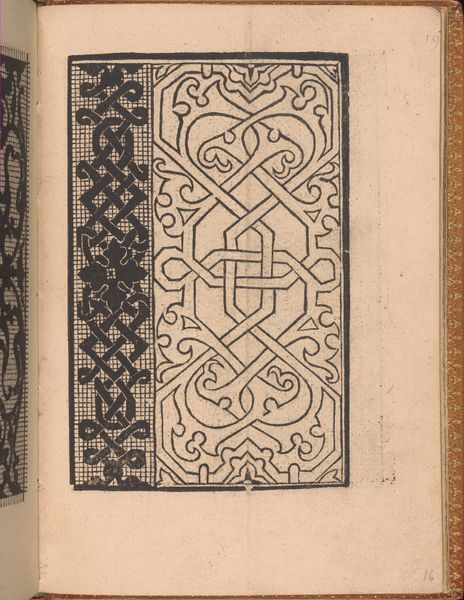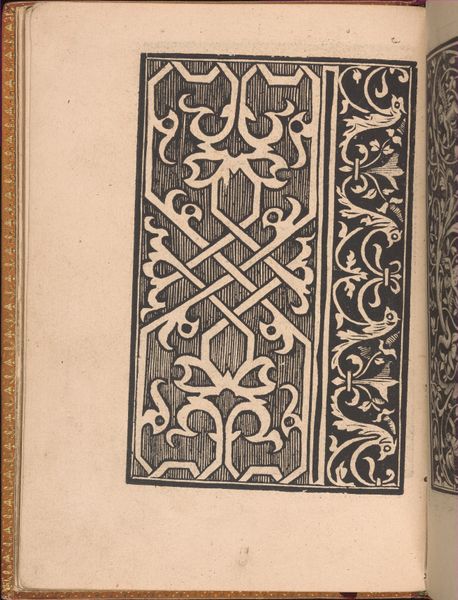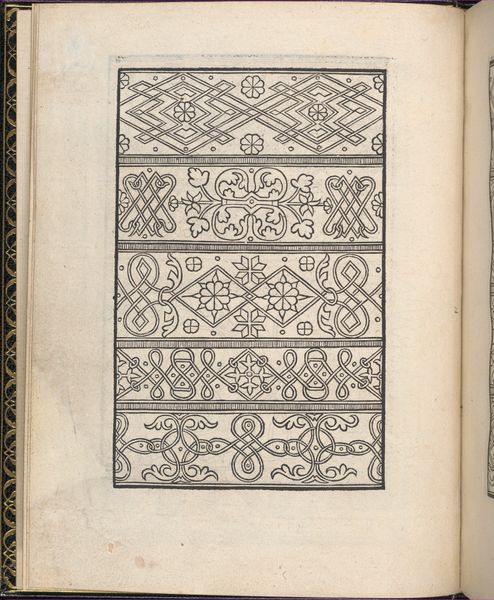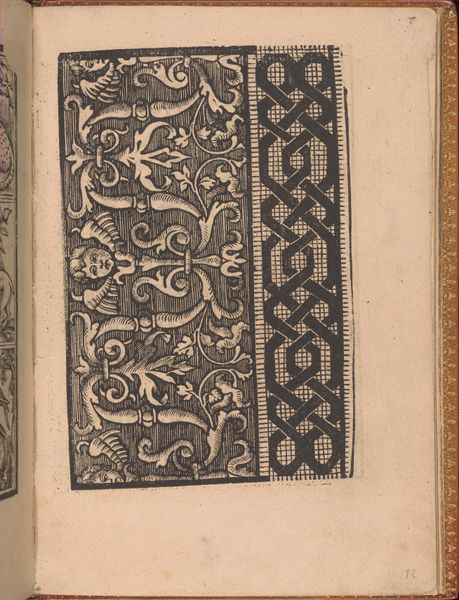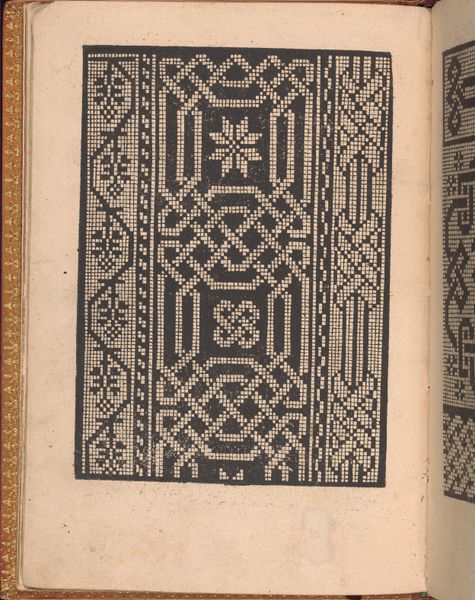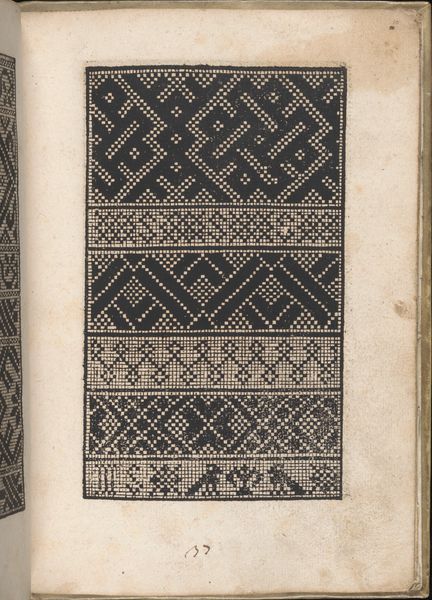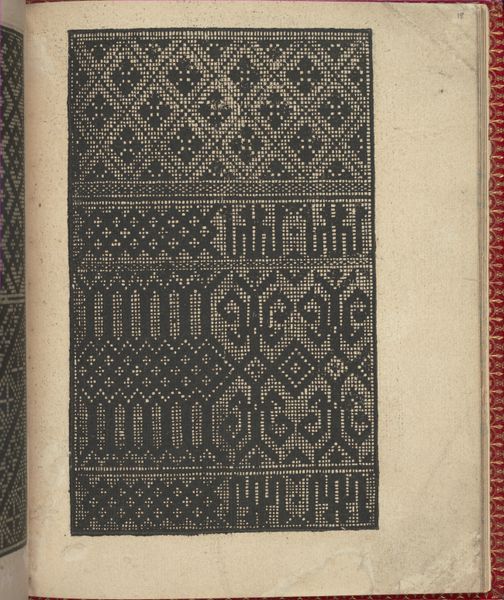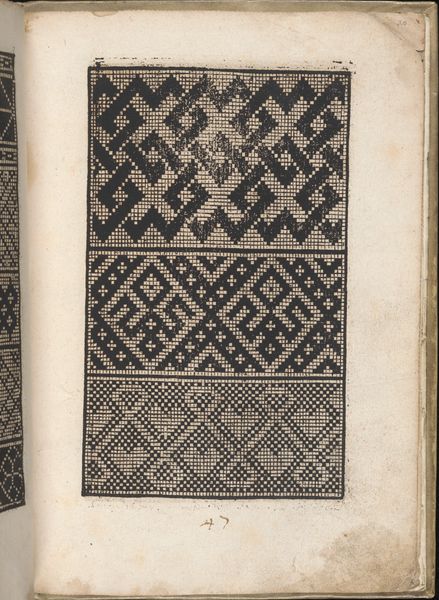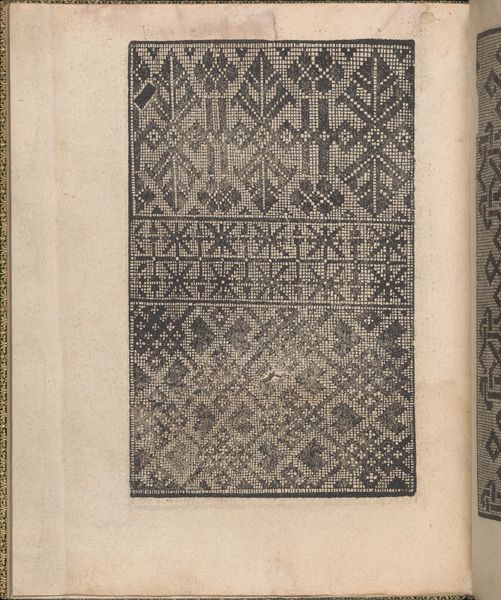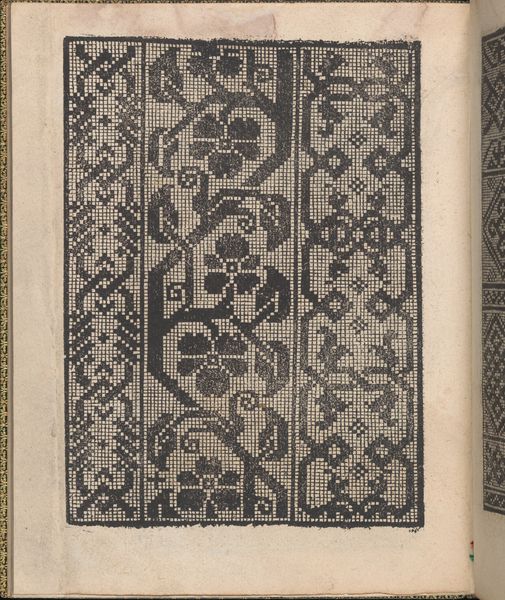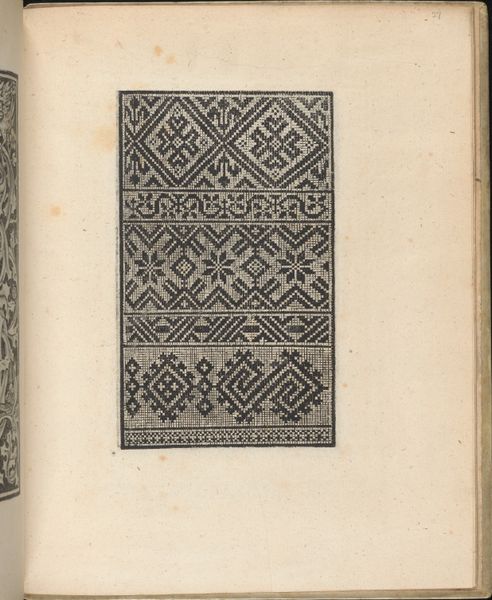
drawing, graphic-art, ornament, print, paper, woodcut
#
drawing
#
graphic-art
#
ornament
#
toned paper
#
pen drawing
#
linocut
# print
#
book
#
paper
#
11_renaissance
#
linocut print
#
geometric
#
woodcut
Dimensions: Overall: 7 7/8 x 5 1/2 in. (20 x 14 cm)
Copyright: Public Domain
Curator: This is page 13, recto, from "Convivio delle Belle Donne," created in 1532 by Nicolò Zoppino. It resides here at the Metropolitan Museum of Art. The artwork uses the printmaking methods of woodcut on paper to create an ornamental pattern. Editor: My first impression? The level of detail is striking. It appears almost like a textile design, meticulously planned and executed, using the simplest of means to achieve complexity. Curator: Absolutely. Zoppino was prolific as a printer and publisher in Venice, producing numerous books with elaborate borders. Think of the political context—Venice as a hub of trade and information. This wasn't just decoration, it was part of the dissemination of knowledge. Editor: I’m also thinking about the physical labor. The carving of those intricate lines into the woodblock would have demanded incredible skill and precision. It elevates craft to high art, forcing us to consider the value we place on different types of artistic labor. Curator: Exactly. These types of pattern books, "Convivio delle Belle Donne" included, had an important social function in early 16th century Venice. It would act as an exemplar to artisans needing inspiration or designs for their work. They played a crucial role in disseminating decorative styles and impacting workshops' and artisans' production. Editor: Do you see a connection to Islamic art in these repeating geometric patterns? The knot work reminds me of motifs that would travel along trade routes and influence Italian Renaissance design. Curator: You’re onto something. Venice had intense trade ties to the Eastern Mediterranean. So these visual languages were constantly circulating, becoming absorbed and transformed within Venetian artistic production. We also have to remember the power dynamics. These cross-cultural appropriations aren't innocent. Editor: It really does invite deeper reflection on how we construct meaning through images and objects. So, while it seems so decorative, this image is embedded in so much social history. Curator: Precisely, and that's what makes it so much more compelling than a simple decoration. I will have to keep a closer eye out for its place of display next time I visit.
Comments
No comments
Be the first to comment and join the conversation on the ultimate creative platform.
